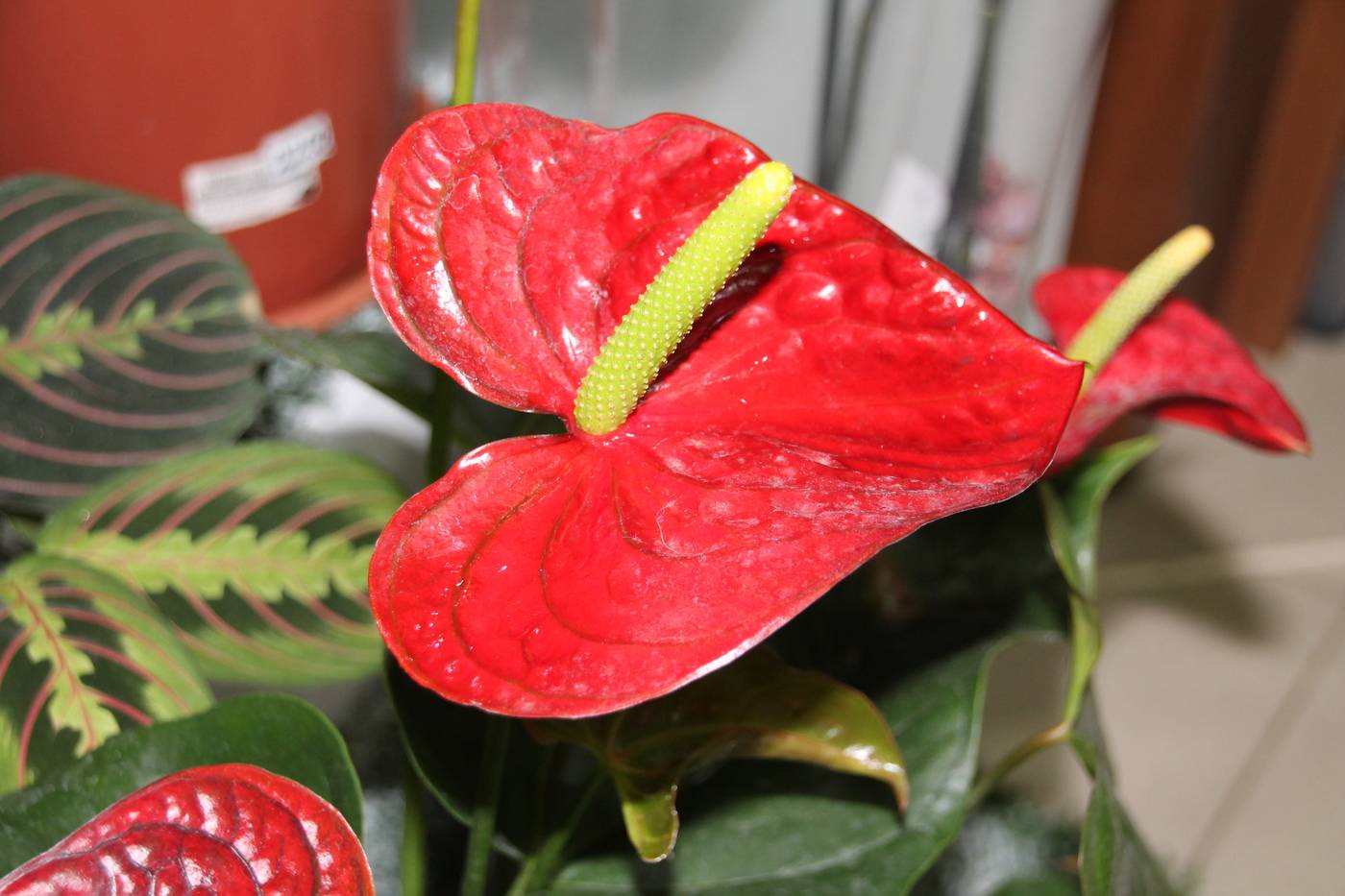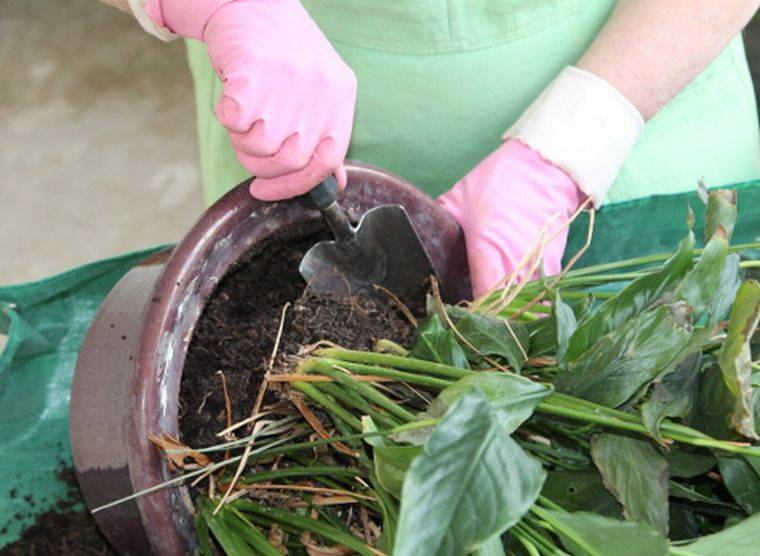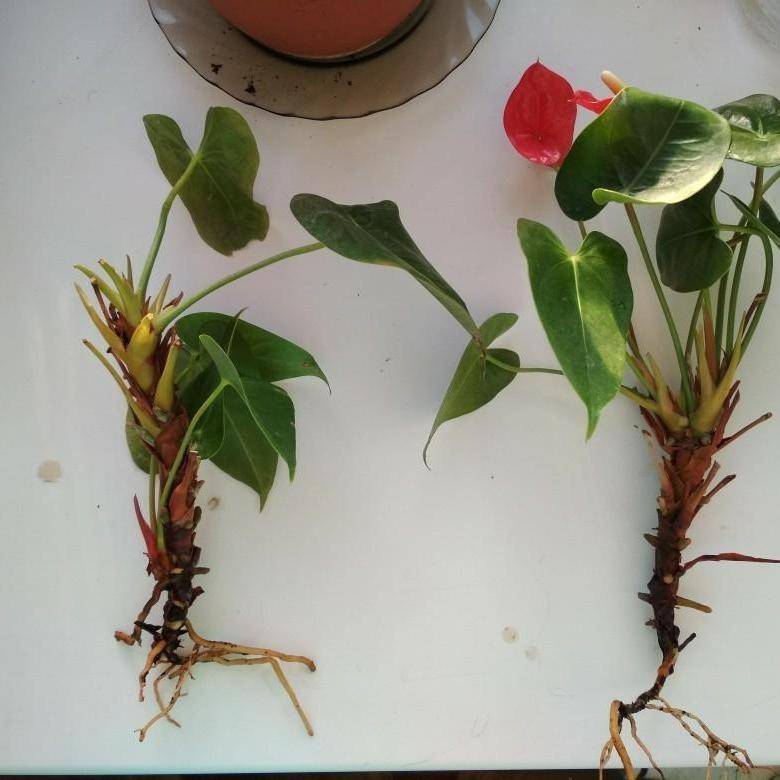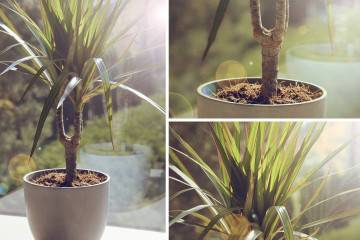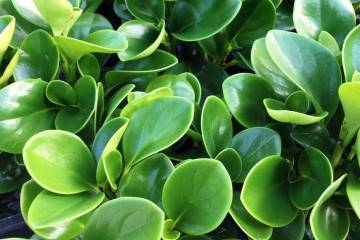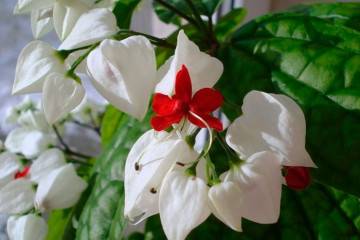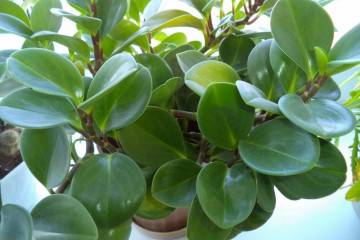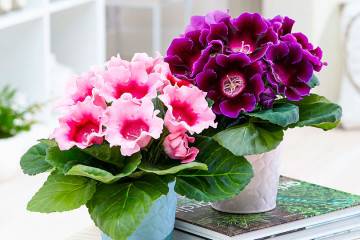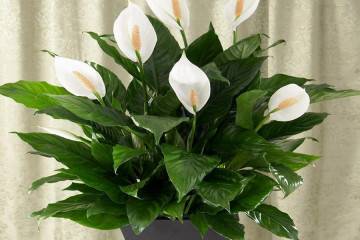Anthurium - home transplant
Content:
Anthurium in a home greenhouse is a favorite flower. A proud handsome man does not forgive carelessness. Everything is important to him. With regard to the anthurium flower, transplanting at home is the most important of the agrotechnical measures.
Anthurium: home transplant
The flower was brought from South America. There it grows under the canopy of a tropical forest, where it is warm, dark and humid. Some of these conditions are created at home. In Russia, the flower has been known since the end of the 19th century.
In nature, the flower is epiphytic - it grows on trees or settles on a heap of fallen branches, lianas and leaves, but does not feed on their juices. Its aerial roots extract useful substances from the environment. There is enough moisture in the tropics, it provides everything necessary for the life of culture.
The beauty of anthurium in the leaves. They are shiny matte or leathery, large, heart-shaped, round, dissected.
The flowers are usually red. They love for their shape - a blanket with a cob in the middle.
An indoor flower can be compact (30-35 cm) or high up to 50 cm.
Disturb the flower during transplantation.
When to transplant anthurium
Plants are considered young up to four years of age. According to the average rules, they are transplanted every year, and old bushes - every 2 or 3 years.
But anthurium transplants are also done at other times:
- as soon as the flower was bought;
- the flower has grown so much that the roots are cramped in the pot. It is determined as follows: they look into the pot, if there is only a lump of roots on the surface, the earth is not visible, the plant is transplanted;
- roots stick out from the drainage holes, which means that the dishes are cramped;
- the soil is depleted. The topsoil is covered with a rusty reddish bloom;
- plastic dishes were deformed under the pressure of overgrown roots;
- the plant withers, does not bloom, the leaf falls off - a suspicion of a disease and the appearance of a pest. Also, slow growth is a signal of an illness. Perhaps a mealybug has wound up in the roots. The flower is removed from the ground, examined. A diseased plant must be transplanted;
- another reason for the procedure is the desire to divide the bush in order to propagate the culture.
The pot from which the diseased plant was removed is boiled, treated with manganese. It cannot be used in the future without thorough cleaning.
Is it possible to transplant blooming anthurium
When asked by novice florists, is it possible to transplant a plant during flowering, the answer is yes. A flowering specimen easily tolerates planting. Its leathery bracts are difficult to damage during transshipment.
Reasons for transplanting a flowering specimen:
- the plant has just been purchased;
- sanitization.
If there is a suspicion of a disease or clear signs of root pests, the flower must be planted in a new pot. Before manipulation, cut off all yellowed leaves and trunks.
When the flowers have already been pollinated, they will stand fresh in the vase for 4-5 weeks.
If not absolutely necessary, then it is better to wait until the end of flowering. This is done with all the other representatives of the home flower garden.
The plant can wither at any time. In spring and cool summer, anthurium tolerates manipulation easier. This is a period of active movement of the juice, the culture starts growing faster.
In the fall, there are nuances:
- before removing the anthurium from the dishes, the substrate is abundantly moistened so that the earthen lump is easily separated from the pot, and the rhizome is not injured;
- new dishes should not be much larger than old ones;
- the top layer of the soil must be renewed, the bare roots are sprinkled with new earth, and then covered with wet moss.
How to replant after purchase
The flower shops sell already flowering plants. The flower can be healthy-looking or sickly. In any case, it is transplanted at home.
If there are no signs of depletion of the plant, the flower has a marketable appearance, then it is allowed to get used to a new place. Adaptation lasts several days, then the anthurium is transplanted into a new pot.
Nurseries use cramped utensils (ugly plastic) with a minimum amount of substrate. It is lightweight and moisture-absorbing. Consists of peat and coconut fiber. The top layer always dries out quickly, the plant is watered unnecessarily. But inside it is constantly wet, the roots begin to rot.
In stores, a good look of the plant is maintained with long-acting fertilizers. Therefore, immediately after the purchase, the culture loses its attractiveness. Its soil for anthurium is depleted, so the plant is transplanted from the transport container.
When the bush looks bad, the ground is completely cleared. The roots are examined, the rotten ones are cut off.
A nondescript store pot is another reason for the relocation of a spectacular tropical guest to a new container.
Preparatory work
First, dishes for the flower, drainage and soil for the anthurium are selected.
Flower pot
Pay attention to the material of the flowerpot. The dishes must maintain the same temperature of the potting medium and the ambient air. In this regard, plastic and glass containers are well suited.
A clay container is only useful if it is glazed from the inside. In a simple clay container, the surface of the walls is covered with pores, the flower will begin to grow roots into them. When the time comes for transplanting, this cannot be done without trauma to the roots.
The shape of the flowerpot is needed wide and shallow, it is necessary for the drainage of water. Drainage holes should be provided at the bottom.
In a wide container, the plant will not be able to quickly master the entire area. In free soil, pathogenic flora will begin to develop. Each next flowerpot should be 2-3 cm larger than the previous one. A pot with a diameter of 24-32 cm is enough for an adult plant. With each transplant, the depth of the pot is increased.
If the purpose of the transplant is children and side shoots, then a spacious container is taken, but the culture will not bloom. When they want a beautiful flowering, they use cramped dishes.
Priming
The condition for the decorativeness of a flower is the correct substrate. The soil for exotic anthurium must meet the following requirements:
- acid balance pH 5.5-6.5;
- the substrate holds moisture well;
- dries easily;
- allows air to pass through.
Novice florists want to know what kind of land is needed to grow anthurium. The soil requires light, but capable of holding an adult plant.The drainage layer should be half the size of the pot so that the water can drain off easily. In this case, the roots are not threatened with decay.
The agricultural pavilions sell potting mixes for all indoor greenhouse plants. But what kind of ready-made soil is suitable for anthurium - the answer is from experts in exotic plants. There are no special types of soil for the crop. There are compositions for orchids and all aroids. Universal primers for home floriculture, which are sold in agricultural firms, are not suitable. They need to be diluted with peat, sphagnum moss, expanded clay, so that the soil does not compact.
You can prepare the soil mixture yourself in the following proportion:
- peat, leaf and coniferous land, river sand (1: 1: 1: 0.5). Improve with charcoal, coniferous bark;
- leaf and sod land, sphagnum moss (2: 1: 1);
- peat, pine bark, expanded clay (1: 1: 1);
- peat, leafy soil, sphagnum moss (3: 1: 1). Improve with broken brick, coarse sand, charcoal;
- peat, moss, pine bark, perlite (1: 1: 1: 1). The composition is suitable for young plants.
The soil is pressed with your hands so that it fits snugly to the roots for better nutrition. As they grow, the roots become bare, protrude above the surface. They are covered with wet moss and peat.
Anthurium transplant
Transplanting is carried out within the average rules for greenhouse crops.
How to transplant anthurium at home, the process is step by step:
- The flower is watered abundantly, allowed to stand for 15-20 minutes, so that the earthen lump is soaked.
- Take the bush by the stems closer to the soil.
- The plant is removed along with the ground.
- Roots are revised: rotten and sick ones are cut off, and healthy ones are treated with phytolavin.
- The bush is placed in the center of the container, earth is poured on the sides.
- Watered with settled water.
- Placed in a pre-selected warm place. Drafts and direct sunlight are contraindicated.
Post-transplant care
During transplantation, the plant can be propagated.
How to plant anthurium during transshipment? Before reproduction, the soil is moistened, the plant is removed, the roots are unwound, and divided into parts. Each should have rhizome, stems and growth buds. If it is not possible to untangle the roots with your hands, take a knife. It is doused with boiling water or treated with manganese.
Bushes are planted in a compact container. The flower is propagated in late autumn or winter during the period of relative dormancy of the plant.
After transplantation, anthurium requires careful care:
- watered with settled water when the topsoil dries out. Excess moisture is drained from the pallet. The flower is sprayed, washed under a warm shower;
- maintain an air temperature of 22-26 ° C. In cold weather, it should be at least 18 ° C. Anthurium is protected from drafts;
- illumination without direct sunlight, diffused partial shade is acceptable;
- after the procedure, the plant is not fed until the first peduncles appear. Then every 2 weeks they are fertilized with liquid formulations for flowering plants.
Anthurium transplant is not a difficult business. You need to take care of the soil and dishes. They are transplanted as soon as they were brought from the store, for sanitary purposes, as the soil is depleted. Planned transplantation of young flowers is carried out every year, adults - every 2-3 years. During the procedure, the culture is propagated by dividing the rhizome. Everything is easy and simple if you follow the rules described above.
